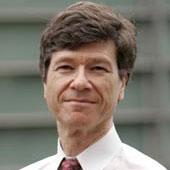A Checklist for Development Economics
What medical strategies can economists apply to repair developing world economies?
July 6, 2005
| I. | Poverty Trap | |
| Poverty mapping using household surveys and other data | ||
| Proportion of households lacking basic needs | ||
| Spatial distribution of household property | ||
| – Rural, urban | ||
| – Concentrated in a few regions vs. evenly spread | ||
| Spatial distribution of basic infrastructure | ||
| Ethnic, gender, generational distribution of poverty | ||
| Key risk factors | ||
| – Demographic trends, environmental trends, climate shocks, disease, commodity price fluctuations, others | ||
| II. | Economic Policy Framework | |
| Business environment | ||
| Trade policy | ||
| Investment policy | ||
| Infrastructure | ||
| Human capital | ||
| – Nutrition, public health, disease control, education, family planning | ||
| III. | Fiscal Framework and Fiscal Trap | ||||
| Public sector revenues and expenditures by category | |||||
|
– Absolute levels in comparison with international norms, percent of GNP |
|||||
| Tax administration and expenditure management | |||||
| Public investment needs to meet poverty reduction targets | |||||
| Macroeconomic instability | |||||
| Overhang of public sector debt | |||||
| Quasi-fiscal debt and hidden debt | |||||
| – Central bank debt | |||||
| Medium-term public sector expenditure framework | |||
| IV. | Physical Geography | |
| Transport conditions | ||
| – Proximity to ports, trade routes, navigable waterways, access to paved roads and motorized transport | ||
| Population density | ||
| – Costs of power connectivity, telecoms and roads, arable land per capita, environmental impacts of population-land ratios | ||
| Agronomic conditions | ||
| – Temperature, precipitation, solar insolation, length and reliability of growing season, soils, topography, suitability for irrigation, interannual climate variability, long-term trends in climate patterns | ||
| Disease ecology | |||
| – Human, plant and animal diseases |
| V. | Governance Patterns and Failures |
| Civil and political rights | |
| Public management systems | |
| Decentralization and fiscal federalism | |
| Corruption patterns and intensity | |
| Political succession and longevity | |
| Internal violence and security | |
| Cross-border violence and security | |
| Ethnic, religious,and other cultural divisions | |
| VI. | Cultural Barriers | |
| Gender relations | ||
| – Discrimination against women and girls | ||
| Ethnic and religious divisions | ||
| Diaspora | ||
| – Role in investment, remittances, social networking | ||
| VII. | Geopolitics | |
| International security relations | ||
| Cross-border security threats | ||
| – War, terrorism, refugees | ||
| International sanctions | ||
| Trade barriers | ||
| – Developed-world tariffs and subsidies that impede development | ||
| Participation in regional and international groups | ||
The checklist is long. Answers to these questions cannot be ascertained in a 15-minute checkup at a clinic, nor, in practice, can they be addressed by a single international agency like the IMF.
The answers must be systematic, continually updated and put into a comparative framework for sound analysis. Many institutions
Read previous
Development Economics as Clinical Economics
July 5, 2005
